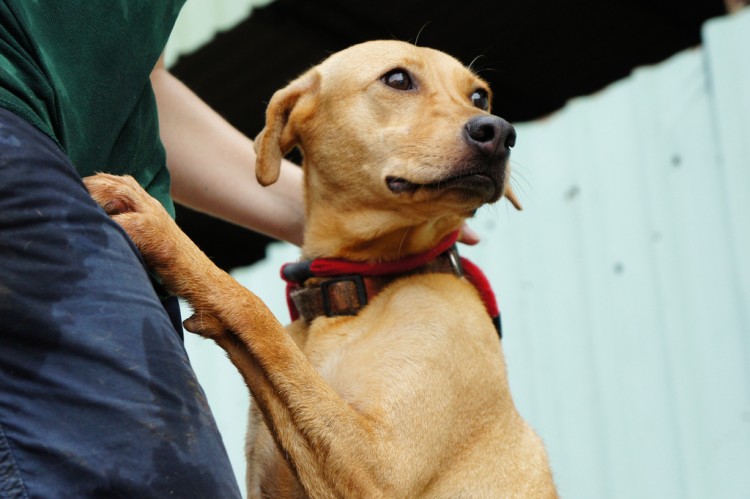Pet Rescue Rules: A Comprehensive Guide to Understanding the Adoption Process
Discover everything you need to know about pet rescue rules, from adoption requirements to essential guidelines for a successful rescue experience.
This guide to adopting a pet from a rescue was written by Tamar Love Grande, who has fostered and adopted out many dozens of dogs over the years. Allison Gray, a former animal shelter worker, and T.J. Banks, who has been involved in cat rescue and fostering, also contributed to this article. It was last updated August 16, 21024

- Understanding Pet Rescue Rules: What to Expect
- Applying to Adopt a Pet: Navigating Pet Rescue Rules
- What to Expect in the Adoption Application
- Key Considerations for Pet Rescue Rules
- Honesty and Fairness in the Application Process
- Phone Interviews: A Key Step in Pet Rescue Rules
- Reference Checks in the Adoption Process
- Home Visits: An Essential Part of Pet Rescue Rules
- What to Expect During a Home Visit
- Meeting Your New Pet: A Crucial Step in Pet Rescue Rules
- The Adoption Contract: Protecting the Pet’s Future
- Key Provisions in the Adoption Contract
- Adoption Fees: Understanding the Pet Rescue Rules
- Follow-Up After Adoption: Staying Connected
- Why Was My Pet Adoption Denied by the Rescue Group?
- A Note About “Bad” Rescues: Recognizing Red Flags
- Try a Shelter First: An Essential Step in Pet Rescue Rules
- Final Thoughts on Pet Rescue Rules and Adopting a Pet
- Frequently Asked Questions (FAQ)

Don’t leave your pet’s safety to chance
Sign up for Petful recall alerts today.

Understanding Pet Rescue Rules: What to Expect
Adopting a pet from a rescue is surprisingly similar to adopting a human baby from an adoption agency.
The Screening Process: Ensuring a Loving Home
In both cases, pet rescue rules require a thorough screening process to ensure that the pet is placed in a home where they will not only be cherished for the rest of their life but also receive the appropriate care and nurturing they need to thrive.
If you’ve never worked with a pet rescue, you might find some of the hurdles frustrating as you navigate the adoption process. But there’s one simple reason for all those hurdles: Rescues want to make sure their babies — many of whom they’ve saved from illness, abuse, and death — are placed in permanent, loving homes where they will be spoiled and pampered for the rest of their lives.
Key Steps in the Pet Rescue Rules
Rescues try hard to ensure their pets go to the best possible homes, which means they do a lot of work in screening their applicants. Here’s what you can expect from most rescues (policies and procedures may vary):
- Application: Complete a detailed application form.
- Home Visit: Prepare for a home visit or virtual tour to assess the environment.
- Interview: Participate in an interview to discuss your experience and expectations.
- References: Provide personal references who can vouch for your suitability as a pet owner.
- Meet-and-Greet: Arrange a meet-and-greet session with the pet.
- Adoption Fee: Be ready to pay an adoption fee, which often helps cover veterinary care and other costs.
Applying to Adopt a Pet: Navigating Pet Rescue Rules
An adoption application gathers the data the rescue uses as criteria for screening potential adopters, following strict pet rescue rules.
What to Expect in the Adoption Application
Expect 1–2 pages of basic questions, most of which focus on your home, lifestyle, and beliefs on how to properly care for a pet. The rescue will also try to match you with a pet who will thrive in your environment.
Key Considerations for Pet Rescue Rules
For example, rescues may take into account the following factors:
- Living in an Apartment: If you live in an apartment and work long hours, a rescue will probably hesitate to give you a young, active dog but might recommend an older dog or a pair of dogs who won’t mind lazing around all day, provided they have a place to potty.
- Work Schedule: If you work long hours, the rescue will assess whether your schedule is suitable for the pet you wish to adopt.
- Outdoor Cats: If you live in the city or suburbs and allow your cats to roam outside, the rescue may reject your application due to the increasing dangers associated with outdoor living for cats.
- Young Children: If you have infants or toddlers at home, a rescue will not allow you to adopt a dog or cat who responds poorly to roughhousing.
- Fence Security: If you live in a house, the rescue will inquire about the security and height of your fence.
- Cosmetic Surgery: If you have a history of performing “cosmetic” surgery on animals—such as cropping ears, docking tails, or declawing cats—the rescue will reject your application outright. However, if you’re interested in adopting a declawed cat, it’s best to discuss this openly with the rescue staff as there may be an already-declawed cat available for adoption.
Honesty and Fairness in the Application Process
The application process should be thorough yet fair. Keep in mind the following points:
- No Personal Financial Details: You should not be required to provide your annual income, employer information, or Social Security number.
- Fair and Transparent: The application should focus on your ability to care for the pet rather than intrusive personal details.
- Honesty is Key: Be as honest as possible when completing your application. Rescues and shelters have many resources to verify the information you provide.
- Animal Well-being Priority: They aren’t looking for a reason to reject you; they’re simply prioritizing the well-being of the animals.
For reference, here’s one example of a thorough but fair online application for adopting a pet from a rescue.

Phone Interviews: A Key Step in Pet Rescue Rules
The next step in the adoption process is a phone interview, which any potential adopter should be prepared to undertake. The rescue will use this opportunity to get to know you better before moving forward with the adoption.
- Be Yourself: It’s important to be genuine and honest during the interview. Misrepresenting yourself could result in an unsuitable match with a pet.
- Purpose of the Interview: The rescue aims to understand your lifestyle and expectations to ensure a successful adoption.
Reference Checks in the Adoption Process
While not all rescues conduct reference checks, most will ask for at least two references, typically from a friend, neighbor, co-worker, or veterinarian.
- Provide Accurate Information: Simply providing the requested references is usually sufficient.
- Verification: If the rescue contacts the vet clinic you listed as a reference, ensure that they recognize you as a client. A lack of recognition could negatively impact your application.

Home Visits: An Essential Part of Pet Rescue Rules
The next step — often viewed as intrusive by some — is the home check. However, it’s one of the most important steps in the screening process and is typically mandatory. The exception would be if you’re adopting from a remote area, in which case the rescue might request you to email photos of your home and yard.
What to Expect During a Home Visit
Here’s what to expect with a home visit before you adopt a pet from a rescue:
- Suitability: A good rescue won’t care whether you live in a house or apartment, as long as the pet you want to adopt is suited to your lifestyle.
- Duration: Most home visits take 10–15 minutes and include a brief tour of your home and yard.
- Non-Intrusive: The rescue representative won’t open your drawers or inspect your baseboards; they’re not there to judge your decorating style or housekeeping skills.
- Meet-and-Greet: They will want to meet your other pets and family members to ensure the pet’s new home is safe and secure.
- Verification: The rescue simply wants to confirm that you are who you say you are and not a hoarder, lab, reseller, or someone who has misrepresented their home, family, and lifestyle on the application.
- No Pet During Visit: The rescue probably won’t bring the pet with them for the home visit, just in case the adoption doesn’t work out.

Meeting Your New Pet: A Crucial Step in Pet Rescue Rules
Unless you’ve already met the pet at an adoption event, you probably won’t meet them in person until the day you plan to adopt them. The rescue should bring the pet to your home, allowing you to get to know them and decide whether you’re ready to adopt:
- Love at First Sight: If it’s love at first sight, you can likely conclude the adoption that day.
- Need More Time: If you’re unsure or need more time to think it over, you can finalize the adoption on another day if the pet is still available.
The Adoption Contract: Protecting the Pet’s Future
Every reputable pet rescue will require you to sign an adoption contract before completing the adoption. If a rescue doesn’t have a contract, they may not be taking proper care of their animals, and it’s advisable to look elsewhere.
Key Provisions in the Adoption Contract
While contracts can vary widely among organizations, you’ll likely encounter these essential provisions:
- Basic Care Commitment: You must provide food, shelter, water, veterinary care, exercise, and, of course, love.
- Lifetime Responsibility: You are adopting the animal for the rest of their life. If you can no longer keep the pet, you must notify the rescue and allow them to help rehome the animal. This could involve simply signing off on a friend or family member taking in the pet or finding a new home altogether.
- Rescue Tag Requirement: You must keep the rescue tag on the animal. While not every rescue requires this, it’s a good idea. If someone finds your pet and can’t reach you, the rescue can serve as a backup contact.
- Spay/Neuter and Vaccination Requirement: You must spay or neuter the animal and complete scheduled rounds of vaccination. If your pet is too young for these procedures at the time of adoption, you will be required to give the rescue an additional deposit (around $100), which they will refund when you provide proof of the completed medical procedures.
You’ll likely be asked to initial several other conditions, but these are the basics.

Adoption Fees: Understanding the Pet Rescue Rules
The adoption fee, often a point of contention with anti-rescue individuals, is the donation you give the rescue in exchange for adopting the animal. It’s important to note that this fee is not a sale price.
- Nonprofit Operation: Rescues are nonprofit organizations, often operating deeply in the red. They rely heavily on adoption fees for funding, as most of their income comes from these fees.
- Vet Cost vs. Fee: Very few rescues charge adopters the full amount spent on vetting costs. For example, if they did, a 10-year-old dog could cost at least $500, which most people are unwilling to pay for an older animal.
- Discounted Fees for Older Pets: Unfortunately, most fosters arrive at rescues sick, old, or in need of major veterinary care. Rescues often charge as little as $50 for these pets to make them more adoptable.
- Puppy Fees: Occasionally, a rescue will get puppies, which is a rare opportunity for them to recoup some of the funds spent on needy animals. If you see a purebred puppy, especially a highly desirable breed like a Maltese or Yorkie, expect to pay $300–500. All those funds go directly toward covering expenses, though they likely won’t make a significant dent.
- Tax Deduction: If you are working with a registered nonprofit, the adoption fee is 100% tax-deductible.
Follow-Up After Adoption: Staying Connected
Expect to hear from the rescue from time to time, particularly the pet’s foster parents.
- Foster Parent Contact: Many foster parents love to keep in touch with the people who adopt their pets. No matter how long the pet stayed with them, fosters often become a part of their family.
- Emotional Connection: Foster parents may miss their foster pets after they’re gone, so receiving updates or pictures can be a heartwarming experience for them.
For more information about pet fostering, you can explore this guide on becoming a pet foster parent.
Watch this delightful video about a pair of Dachshunds who were rescued:
Why Was My Pet Adoption Denied by the Rescue Group?
If the rescue rejected your application, they likely had a valid reason. While it might be a temporary situation you can resolve—such as building a fence or waiting for a child to get a little older—it’s often due to one of the following reasons:
Common Reasons for Pet Adoption Denial
- You Lied on Your Application: Dishonesty is a major red flag. Misrepresenting yourself or your situation is a sure way to get denied.
- Unsafe Home Environment: No rescue will place an animal in a home where their safety is in question. This includes:
- Lack of a secure yard
- Family members who habitually leave doors or gates open
- Ongoing, dangerous home improvement projects
- It Wasn’t a Good Match: You may believe Twinkles is the perfect kitty for you, but the rescue may disagree. They know the animal and what they need in terms of their perfect home. If it’s not a good match, don’t get upset. Instead, talk with the rescue about another pet that might be better suited for you.
- You Wanted an “Outdoor Dog”: Dogs are not lawn ornaments. They are social animals who deserve to be part of your family. If your plan was to chain up your adopted puppy in the yard, don’t expect the adoption to be approved.
- You’re Under 21: Many rescues have age restrictions due to insurance liabilities and concerns about the stability of young people’s lives. If you’re under 21, it may be a barrier unless you’re living a stable life, perhaps married or in a permanent relationship, and own your home.
- Military Family Concerns: Many pets end up back in rescues when their families are deployed. If your family frequently moves from base to base, the rescue may reject you because of the uncertainty of your next post. However, if you’re in permanent housing, the rescue might be more willing to work with you. For more information, check out this guide on dogs and deployment.
- You’re Perceived as “Weird”: This is subjective, but if an applicant argues or gets angry, or if the rescue representative has a gut feeling, they may reject the application. Rescues don’t exist to supply people with pets; their primary function is to find safe and loving homes for needy animals.
Alternatives if You’re Rejected
If your application is rejected, remember that you can always consider adopting from your local shelter. Explore more about adopting from a shelter.

A Note About “Bad” Rescues: Recognizing Red Flags
Most animal rescues are great, but a few can be challenging to work with. If you encounter any of the following red flags, it’s best to choose another rescue:
Red Flags to Watch Out For
- Lack of Communication: Rescue volunteers juggle work, family life, and extensive responsibilities like saving animals, arranging for their vet care, and more. However, if you submit an application and don’t hear back within a week, even after following up, you might not be dealing with a good rescue.
- Unhealthy Animals: While not all rescues can afford extensive veterinary care, they should ensure that their fosters don’t have kennel cough or respiratory infections. If the animals are dirty or appear neglected, it’s a sign that they aren’t being properly cared for.
- Odd Paperwork: A good rescue will require you to complete an adoption application and contract. If they don’t, or if they fail to provide shelter paperwork or spay/neuter and vaccination records, something isn’t right.
- Rejection of Qualified Applicants: If you’re a qualified adopter—with a stable life, a safe home environment, and healthy pets—and the rescue still rejects you, it could be a sign that the rescue is hoarding animals, believing no one is good enough to adopt them.
Dealing with Unpleasant Rescue Volunteers
Another issue you might face is encountering extremely unpleasant rescue staff. Unfortunately, this is not uncommon. Volunteers who work with shelter animals for years often witness the worst of human behavior, leading to a deep-seated frustration.
- Volunteer Burnout: After years of dealing with under-qualified adopters and witnessing repeated bad situations, many volunteers become jaded and may start to dislike people categorically.
- Compassion and Patience: If you run into a cranky rescue volunteer, try to be understanding and patient. Remember, the volunteer is likely exhausted and emotionally drained.
Finding the Right Rescue
If you have a bad experience with a rescue, remember that you can always go to a different one. You’ll find hundreds of rescues listed on Petfinder.

Try a Shelter First: An Essential Step in Pet Rescue Rules
A common question I get is, “Why should I jump through all these hoops when I can go to the shelter and get any animal I please?”
Why You Should Consider the Shelter First
- Save Lives: First off, please go to the shelter. Pets in rescues are no longer in danger of being euthanized—but pets in shelters are.
- Health Assurance: Shelters will spay/neuter, vaccinate, and microchip the pet before sending them home with you, but they usually don’t have the budget to treat sick animals. Unfortunately, sick animals are often put down immediately. Rescues, however, ensure the animal gets any necessary veterinary care, including medication, dental cleanings, or even surgery. If they can afford it, they’ll also pay for blood work and a urinalysis.
- Assessing Temperament: When animals are in the shelter, they are often stressed and scared, making it difficult to assess their true personality. In foster care, however, the pet’s temperament is observed in a more stable environment. Foster parents can provide insights into how the pet interacts with children, strangers, and other animals.
- Finding the Right Match: If you’re looking for a pet of a specific age, personality, or breed, you might not have much luck at a shelter. A rescue can help you find the pet you’re looking for, even if it takes some time.
- Basic Training: While there might not be time for formal training in foster care, pets are usually house-trained and leash-trained.
Final Thoughts on Pet Rescue Rules and Adopting a Pet
By adopting from rescues, you’re not only giving a home to a pet who truly deserves it, but you’re also opening a spot for another needy animal.
Sometimes, adoptions don’t work out. That’s why reputable groups clearly state in their contracts that the pets should be returned to them if things don’t go as planned. Beware of any group that doesn’t have this clause, as a take-back policy can be a life-saver. Don’t be ashamed to return a pet if necessary.
Frequently Asked Questions (FAQ)
What are pet rescue rules?
Pet rescue rules are guidelines and procedures that ensure animals are placed in safe, loving, and permanent homes.
Why might my pet adoption application be denied?
Your pet adoption application might be denied due to factors like an unsafe home environment, misrepresentation, or an unsuitable match with the pet.
What should I expect during a home visit for pet adoption?
During a home visit, expect a brief tour to ensure your home is safe and suitable for the pet you wish to adopt.








